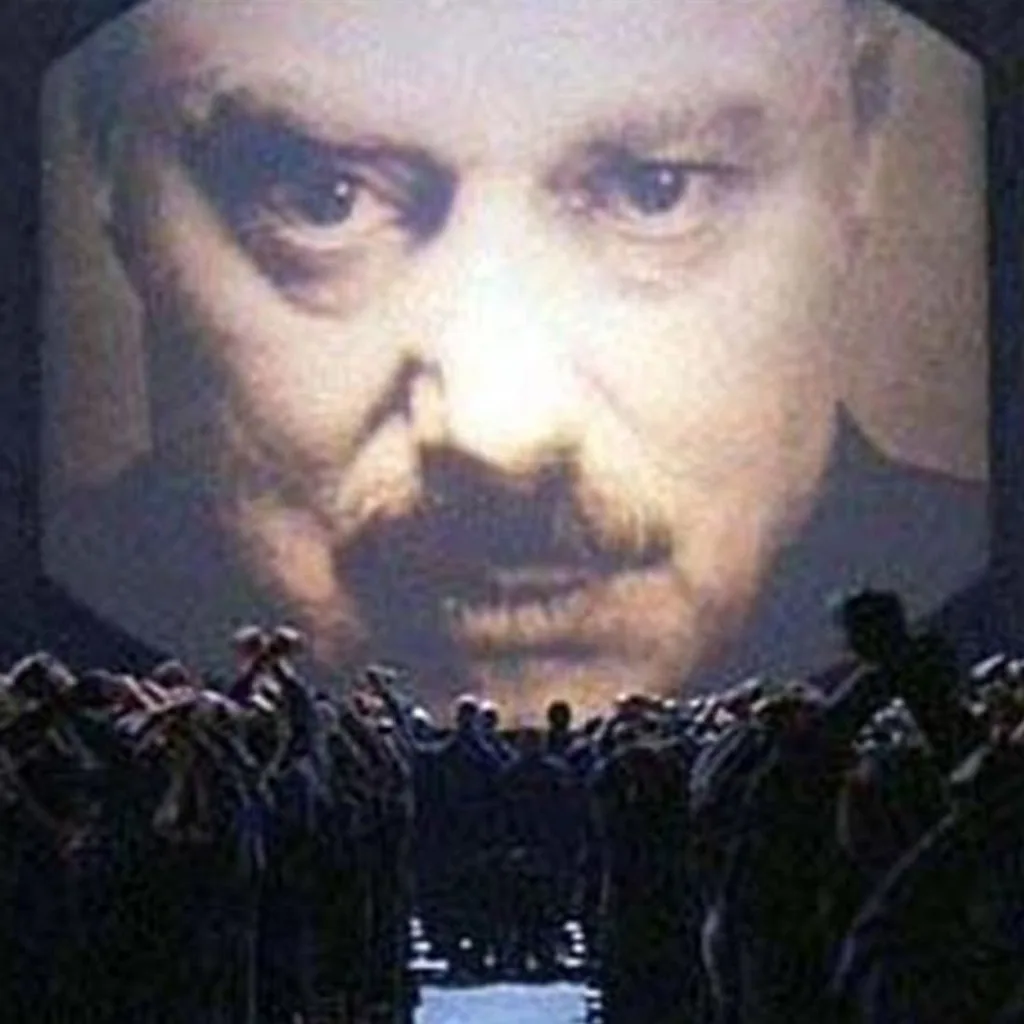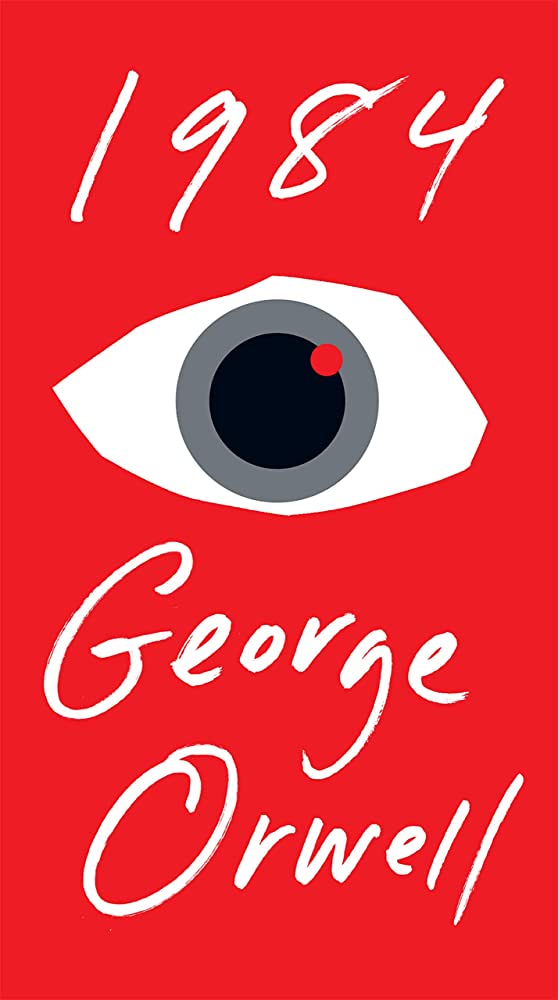In George Orwell’s dystopian novel Nineteen Eighty-Four, thee is a character named Emmanuel Goldstein who is portrayed as the principal enemy of the state of Oceania’s ruling party. The character of Goldstein is shrouded in mystery, and it is unclear whether he actually exists or is simply a propaganda tool used by the Party to keep citizens in line and prevent rebellion.
Goldstein is associated with the Brotherhood, a supposed resistance movement that fights against the oppressive government of Oceania. The Theory and Practice of Oligarchical Collectivism, a fictional book in the novel, is said to be written by Goldstein and serves as a manifesto for the Brotherhood’s ideology.
However, it is important to note that the character of Goldstein is never physically seen or encountered by the protagonist, Winston Smith. Instead, Goldstein is only ever referred to in Party propaganda or in the book within the novel.
Therefore, it can be argued that Goldstein may not actually exist as a real person, but rather, is a creation of the Party to instill fear and obedience in citizens. The character of Goldstein serves as a scapegoat for the Party’s failures and is used to distract citizens from the reality of their oppressive lives.
The question of whether Goldstein is real in Nineteen Eighty-Four is left open-ended, as the character’s existence is never definitively confirmed or denied. However, it is clear that Goldstein serves as a powerful symbol of the Party’s propaganda machine and the use of fear and manipulation to control the population.
Is Goldstein a Fictitious Character?
Goldstein is a fictional character in George Orwell’s classic dystopian nvel “1984.” Although it is not explicitly stated in the novel, it is widely believed that Goldstein is a propaganda tool created by the ruling Party to manipulate and control the citizens of Oceania.
Goldstein is depicted as a traitor and enemy of the state who leads a secret organization called “The Brotherhood” that seeks to overthrow the Party and establish a democratic society. The Party uses Goldstein as a scapegoat to deflect attention away from their own failures and shortcomings, and to create a common enemy that citizens can rally against.
Despite the fact that Goldstein is a fictional character, he plays a crucial role in the novel as a symbol of oppression and totalitarianism. The Party uses him to manipulate and control the thoughts and emotions of the citizens, instilling fear and paranoia in their minds.
While Goldstein may not be a real person, he serves as a powerful symbol of propaganda and manipulation in “1984.” His fictional existence underscores the novel’s theme of the dangers of totalitarianism and the importance of individual freedom and autonomy.

Does Big Brother and Goldstein Exist?
In George Orwell’s novel, 1984, Big Brother and Goldstein are fictional characters that exist within the narrative. While they are not real individuals, they represent the two opposing forces at play in the totalitarian society depicted in the novel.
Big Brother is the figurehead of the ruling Party, who is constantly watching and controlling the citizens of Oceania. He is the ultimate symbol of the Party’s power and authority, and his image is plastered everywhere in the society. While Big Brother is not a real person, he is a representation of the oppressive government that seeks to control evey aspect of citizens’ lives.
Goldstein, on the other hand, is the figurehead of the resistance movement against the Party. He is portrayed as a traitor and a criminal by the Party, but is seen as a hero by those who oppose the Party’s regime. Goldstein represents the opposing force to Big Brother – the hope for freedom and the desire for rebellion against the oppressive government.
While Big Brother and Goldstein are not real individuals, they are important symbols in Orwell’s novel that represent the two opposing forces at play in the totalitarian society. Big Brother represents the oppressive government that seeks to control every aspect of citizens’ lives, while Goldstein represents the hope for freedom and rebellion against the Party’s regime.
Is Goldstein’s Book Authentic?
Goldstein’s book, “The Theory and Practice of Oligarchical Collectivism,” is not a real book in the sense that it does not exist outside of George Orwell’s nvel Nineteen Eighty-Four. It is a fictional book that is attributed to the novel’s antagonist, Emmanuel Goldstein, who is portrayed as the leader of a subversive group called “The Brotherhood.”
The purpose of the book in the novel is to serve as a manifesto for the Brotherhood’s rebellion against the ruling party of Oceania. The book is described as a dense and difficult text that explores the nature of power, the role of the individual in society, and the methods of social control used by the ruling party.
Although the book is not real, it is an important element of the novel’s world-building and serves as a symbol of the oppressive regime’s control over information and knowledge. The fact that the book is banned and its possession is punishable by death underscores the totalitarian nature of the ruling party and their desire to maintain absolute control over their citizens.
Goldstein’s book, “The Theory and Practice of Oligarchical Collectivism,” is not a real book, but rather a fictional text created for the purposes of the novel Nineteen Eighty-Four.
Symbolic Representation of Emmanuel Goldstein
Emmanuel Goldstein is a symbolic character in George Orwell’s dystopian novel, 1984. He represents the ultimate enemy of the totalitarian state of Oceania and is portrayed as a traitor, a villain, and a threat to the government’s control. Goldstein is the leader of a rebel group called “The Brotherhood,” which is dedicated to overthrowing Big Brother and restoring democracy to Oceania.
Goldstein is a complex symbol that embodies the themes of rebellion, freedom, and oppression in the novel. His character serves as a warning aainst the dangers of totalitarianism and the importance of preserving individual freedom. In the novel, Goldstein is used as a propaganda tool by the government to maintain its power and control over the masses.
One of the most significant aspects of Goldstein’s character is his role as a scapegoat for the government’s failures and shortcomings. He is depicted as a mastermind behind all the problems in Oceania, including food shortages, poverty, and political unrest. The government uses Goldstein as a way to deflect blame and maintain power by presenting him as a common enemy that everyone can rally against.
Emmanuel Goldstein represents rebellion, freedom, and oppression in 1984. He serves as a warning against the dangers of totalitarianism and the importance of preserving individual freedom. His character is a tool of propaganda for the government to maintain power and deflect blame for its failures.

Conclusion
It is highly unlikely that Goldstein exists as an actual person in the world of 1984. Rather, he serves as a symbol of rebellion and opposition to the Party’s oppressive rule. The Party uses Goldstein as a tool to manipulate and control the emotions of citizens, creating a sense of fear and paranoia that prevents rebellion. The fictional book, The Theory and Practice of Oligarchical Collectivism, attributed to Goldstein, is a propaganda tool used by the Party to frther their agenda. Goldstein is a powerful symbol of resistance and opposition, but he is not a tangible figure in the world of 1984.
